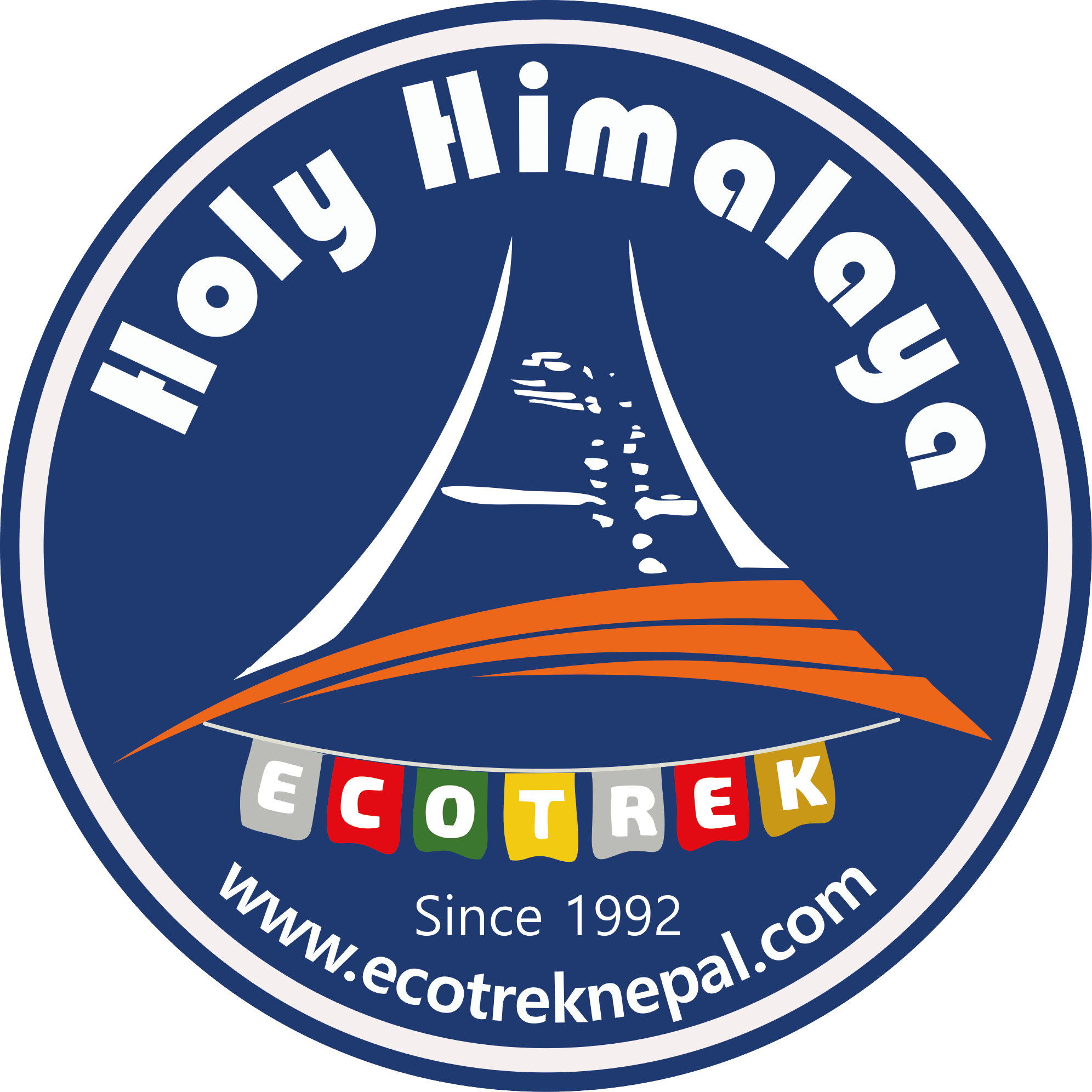
Kanchenjunga Circuit Trek
Tour snapshot
25 Days
2 persons
Nepal
Trekking in Nepal
Overview
Mount Kanchenjunga, situated at an elevation of 8,586 m (28,169ft.), is the third-highest mountain in the world. This mountain shares a border with Sikkim, or India, in the eastern part. Kanchenjunga is a Nepali name, and in English, it translates to Crystal Clear, something that is very clean and holy.
Like many other peaks in Nepal, yes, you can walk up to the Kanchenjunga Base Camp and see it from close. You will need to trek for about 2 weeks to reach the base camp, transversing from one village to another and from one valley to another. It is a tea house trek where you will be eating your meals and crashing at night in the tea houses and lodges, listening to the local people’s tales, and enjoying the foods and culture together in a joyful way.
Kanchenjunga massif, also called ‘Five Treasures of the High Snow’ because the summit has five significant peaks, namely Kanchenjunga Main (8,586 m), Kanchenjunga West, which is Yalung Kang (8,505 m), Kanchenjunga South (8,494 m), Kanchenjunga Central (8,482 m), and Kangbachen (7,903 m).
The Kanchenjunga trek is labelled as one of Nepal’s most adventurous and demanding treks that uncovers lush tropical jungles, rhododendron forests, and high-altitude glaciated base camps.
The region, while walking, covers the houses of various ethnic communities of Nepali, like the Sherpa, Rai, Tamang, and Lamas. These communities have their own authentic cultures and traditions, including their own festivals, dances, rituals, and daily routines.
Kanchenjunga region is also a showcase of diverse ecosystems, containing endangered species of animals such as the elusive snow leopard, musk deer, Himalayan black bear, and red panda, and rich in flora.
It takes closer to 2 weeks to complete this trek. Any age is fine; you just need to be fit to walk on the rocky mountain trails.
Highlights
- Majestic views of Kanchenjunga Massif alongside Everest, Lhotse, and Makalu.
- Exploration of diverse ecosystems, lush forests, high-altitude glaciers, and rare wildlife.
- Authentic Himalayan hospitality in the remote villages in traditional tea houses and lodges.
- Engage in cultural exchange, learning customs and traditions from local communities.
- Experience the local culture of the Sherpa, Rai, Tamang, and Lama communities.
Itinerary



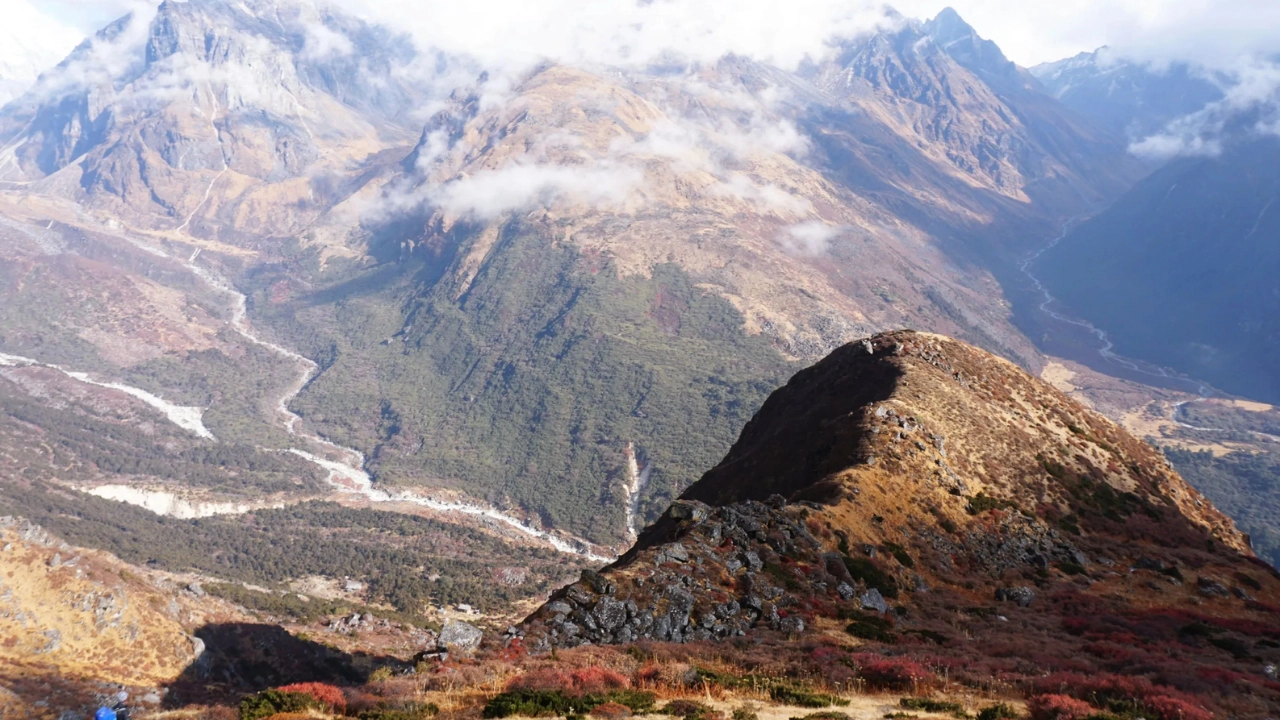
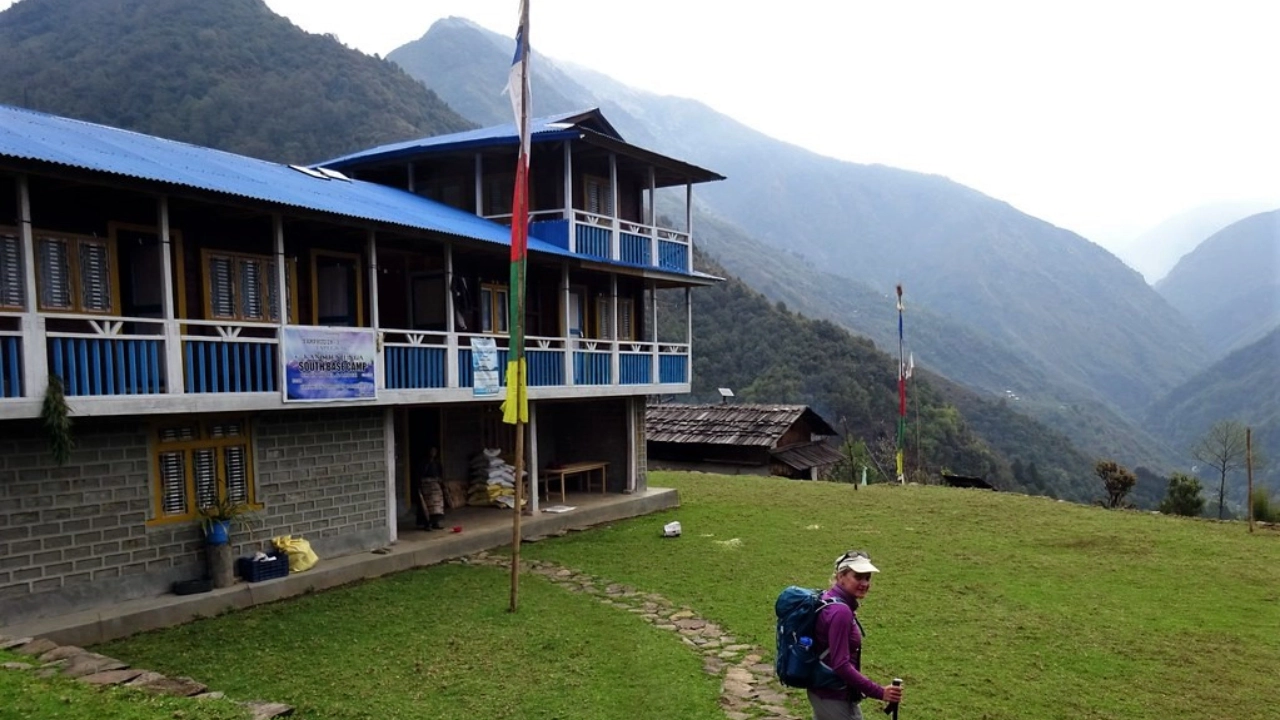


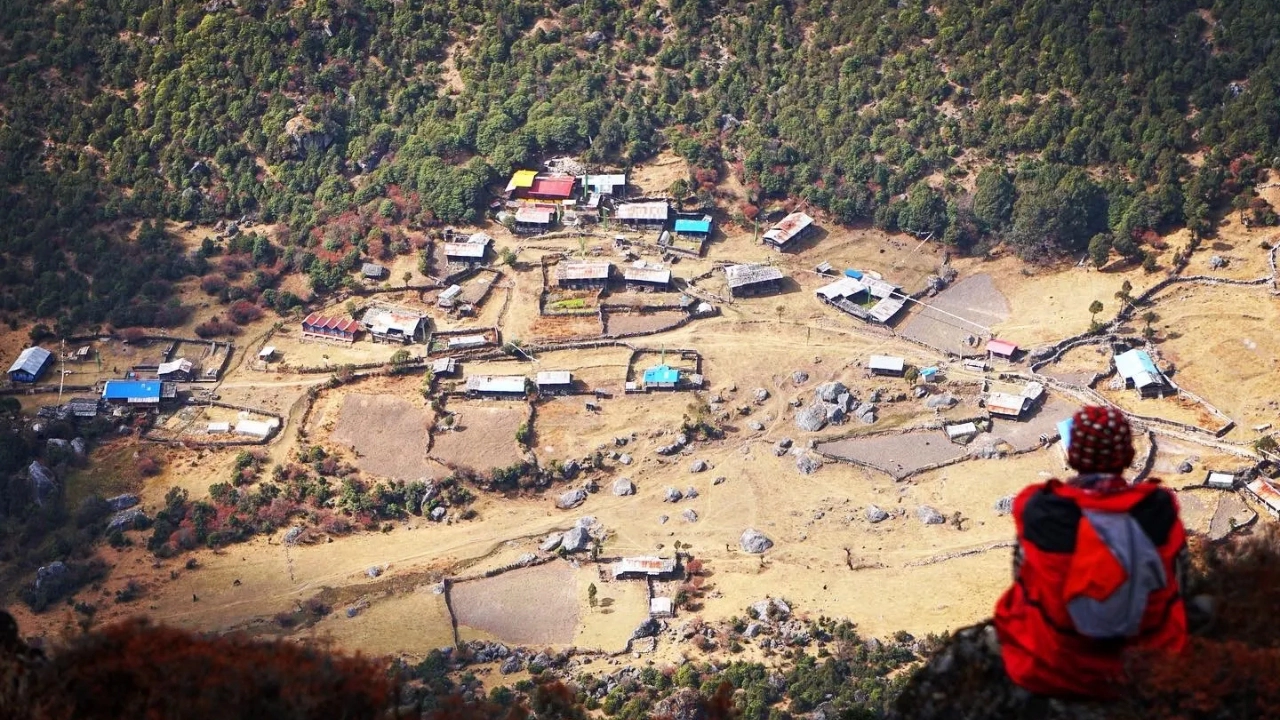
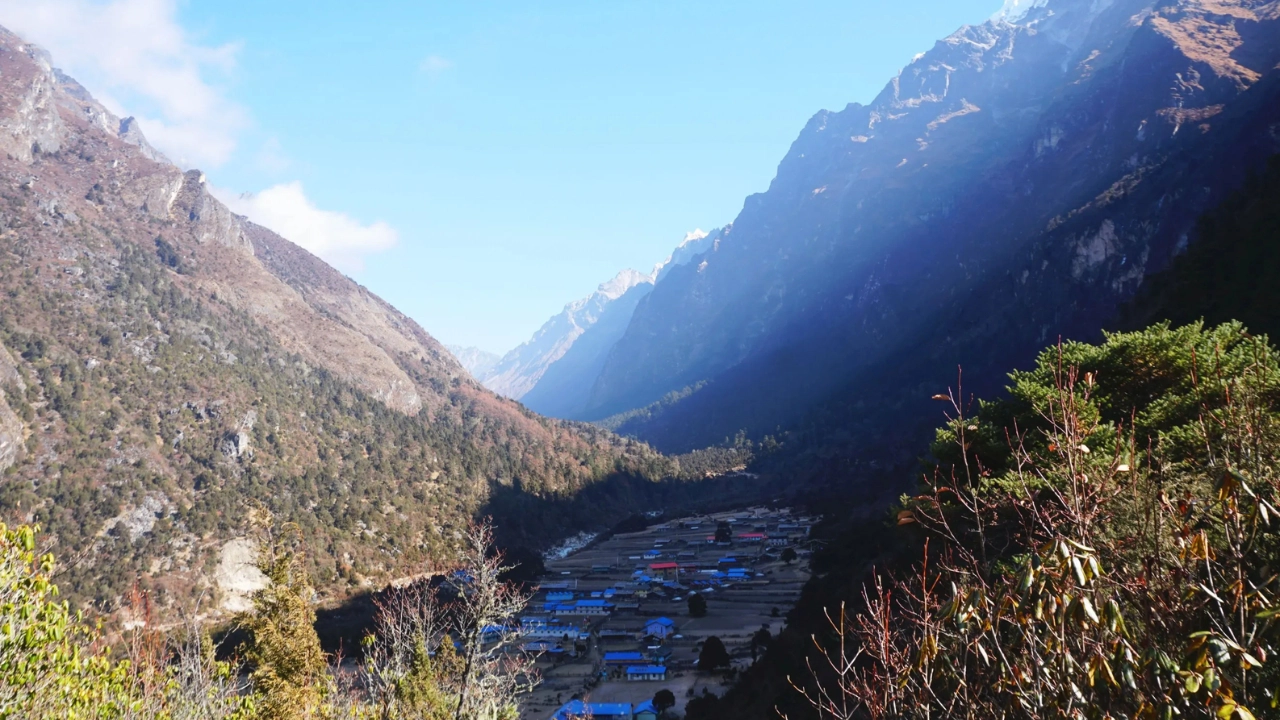














Included/Excluded
Service Fee Only, Explore Nepal Fully!
Select Dates
{{type.name}}
{{type.display_price}} per person
Guests
Extra prices:
- {{total_price_html}}
- {{pay_now_price_html}}
FAQs about Kanchenjunga Circuit Trek

March to November are the best seasons for this trek, in different ways. March to May is the spring season, which is called rhododendron season as well. September to November, autumn. The weather in the spring is generally dry and warm, with a moderate temperature of 0 to 20 degrees. The temperature in the autumn starts from 08 degrees Celsius to 20 degrees Celsius, making it mild and the perfect time to trek in the Kanchenjunga region with clear skies and amazing views of the snow-capped mountains. The monsoon season (June to August) in the Kanchenjunga region experiences great rainfall, making trekking more challenging with high-rush floods. The weather is wet and mild, with a temperature between 10 and 20 degrees Celsius.

The starting point of any Kanchenjunga region trekking is closer to Taplejung. There are several means of transportation to Taplejung, depending on your preference and budget. 1. Flight using fixed wings or helicopters (trekking starting and ending points), 2. Fight to Bhadrapur and the Road to Taplejung—even further.

There are two types of permits required for trekking in the Kanchenjunga region. You must apply for permits from the Nepali government and follow all the rules and regulations about trekking in the region. The two permits are: 1. Kanchenjunga Conservation Area Permit (KCAP) The Kanchenjunga Conservation Area spans over an area of 2,035 sq. km. and is managed and regulated by the Kanchenjunga Conservation Area Management Council (KCAMC). The region is home to endangered species of animals like the Snow Leopard, Red Panda, and Musk deer, as well as diverse flora. The Kanchenjunga Conservation Area Permit (KCAP) allows visitors to enter the area and trek inside the region. This permit can be obtained from the Nepal Tourism Board in Kathmandu or at the Kanchenjunga Conservation Area Project office in Taplejung. Kanchenjunga Conservation Area Permit Cost The fee for Nepali citizens is NPR 100 per person. The fee for SAARC nationals is NPR 500 per person (approx. USD 5). The fee for other nationals is NPR 2,000 per person (approximately. USD 20). 2. Restricted Area Permit (RAP) Restricted Area Permits are the special permits that are required to trek in the areas that fall under the restricted regions of Nepal. The four village development committees of Yamphusing, Lelep, Paping, and Olangchung Gola in the Taplejung districts fall into the restricted region and require a restricted area permit to trek in the region. The permit can be obtained only through a licenced trekking agency in Nepal, and it is compulsory to hire a registered guide or porter for the entire duration of the trek. Documents Required for the Kanchenjunga Trek Permit 1. Valid passport with at least 6 months remaining validity and a valid Nepal visa extending past the expiry date of RAP. 2. 2 passport-sized photos for KCAP 3. E-copy of the passport-sized photo to be uploaded for Kanchenjunga RAP’s online form. WE, HOLY HIMALAYA, WILL LOOK AFTER ACCQUIRING ANY OF THE REQUIRED PERMITS FOR THE TREK.

Since the locals are ready to welcome guests to their newly built, lovely home, called a tea house or lodge, it is highly recommended that you use it. The tea houses or lodges have the basic facilities for spending the night in shared or single rooms after a day-long trek. Some teahouses have attached bathrooms and European-standard commodes, while others have shared bathrooms with squad commodes. The lodges and guest houses also provide meals. Another option is camping. There are a lot of wonderful spots in the Kanchenjunga region to set up camp and rest for the night. You can set up your camp on the yak grazing grounds in the lap of the world’s third-highest peak, enjoying the mountain vistas. You can cook for yourself or eat in the tea houses and use other facilities like showers, washrooms, charging, etc. if you are camping.

You can enjoy teas (black tea, milk tea, green tea), coffee (black or milk coffee), hot chocolates, and cold drinks (coke, Fanta, Pepsi, etc.), and the price for the drink varies from NPR 250 to NPR 450 depending on the drink. You can’t find bottled water as you ascend the elevation. You can either consume boiled water, for which you’ll have to pay extra, or carry water purification tablets or a filtering system to ensure safe drinking water. Do not forget to fill up the backpack with snacks and energy bars to use as trekking fuel.

Electricity, internet, and telephone connectivity are almost everywhere, as long as there is good settlement. Once you are closer to the inner valley, high passes, and base camp, you will be out of data and wifi range at some point, and you can't get electronically connected. It happens for a few days at the high end of your treks. Hydroelectricity or solar panels are supplying good enough energy for your power back almost everywhere. NTC has the maximum coverage compared to Ncell.

Trekking in the Kanchenjunga region is challenging and difficult, even for seasoned trekkers. The cold and high altitude might be injurious for people, and any casualties may happen on the journey. In the worst case possible, trekkers may require immediate medical care and may be flown to a hospital in a helicopter. Insurance can be seen as an investment for the trip.

Kanchenjunga required a high level of physical fitness. The journey continues through steep ascents and descents, rocky paths, narrow trails, and exposure to high altitudes.

Lightweight and fewer items are what mountain trails need. The packing list should be tailored as per your requirements and preferences, so be mindful while packing, remembering the elevation you are going to conquer in your journey. Bag Pack Generally, 50 to 60 litres of backpack are a good choice to have for the entire trek. Either for yourself or as a helper (porter), a very comfortable backpack means a lot while walking up and down the Himalayan trails. On any luxury or support trek, your local trekking operator will provide you with a duffel bag if you need to protect your bags from dust and mud. Head, Inner, Outer, and Foot Wear for Trekking Be sure of your timing to be on the Himalayan trail. Generally, the temperature during spring and autumn (April, May, September, and October) is warm and moderate, so the weather is perfect. So, light, warm clothes with a wind-proof jacket are fine while trekking at lower altitudes. You can also see some trekkers wearing shorts (of any gender) only at lower elevations. While you are at higher elevations, do protect yourself from the cold. The monsoon (June, July, and August) is a lovely time as well, if you prepare to walk on rainy days and wet trails. Winter (Jan/Feb) in the Himalaya is heartbreakingly cold, where temperatures drop down to -30°C at night. So, a well-prepared list will not leave you with space to regret when you become the highest mountain in the world. 1. Head Wears Cap/Hat: Having a wide-brim hiking hat or cap is very essential gear while trekking in Nepal. They provide protection from the sun and wind. Beanie: Generally, during the early morning and late afternoon, it usually starts to get cold in the trekking region. So, packing a warm fleece beanie is a must to keep you warm while trekking. Buff: You can wear a buff, neckband, or balaclava throughout the whole Everest Base Camp trek. This will prevent you from getting a mountain cough. Sunglasses protect from mountain winds and dust. Do bring sunglasses with high UV protection and polarised lenses. 1. Inner Wears Innerwear is the most important thing to pack while trekking in any part of the region. It keeps you warm and sweat-free throughout the entire trek. Here are the innerwear items you need to pack: • Warm Gloves: 1 pair • Wicking long-sleeve T-shirts: 2 pairs • Quick-dry T-shirts: 2 pairs • Bra: 3 pairs (sports bra recommended) • Thermal underwear: 2 pairs • Underwear: 4 pairs It is recommended that you go for Columbia sportswear or some other brand of similar quality. 1. Outer-Wear Outerwear is like a protection shield for you in the freezing cold. It keeps you safe from light bruises, colds, and getting wet during a trek. So, here are some outerwear items that we recommend for trekking: • Fleece Jackets: 2 pairs • Insulated Jacket or Down Jacket: 1 pair (Note: You can get jackets on rent, normally $10–$15.) • Insulated trekking pants: 2 pairs (it is not easy to predict the weather status on the higher part of the Himalaya, so be ready to encounter the rain or snowfall anytime). It is always best to have a pair of waterproof jackets and pants in your bag. • Shorts (optional) • Gaiters (optional) It is highly recommended that you go for The North Face jackets or similar quality jackets. 1. Foot-Wear Waterproof trekking boots are highly recommended. Depending on your comfort, you can have either a low-cut boot or a higher-cut boot, but the higher-cut boot is the best. A higher-cut boot prevents water from entering your feet, as well as ankle sprains. • Hiking boots: 1 pair • Spare shoe: 1 pair • Camp shoe or sandal: 1 pair • Wool hiking socks: 4 pairs • Cotton socks: 2 pairs Precaution: Wear your brand-new boots for some time before heading towards the mountains. It will prevent blistering caused by the new footwear. If you get a blister, quickly take care by applying duct tape or moleskin. Tips for gear shopping: If you haven’t carried any of the necessary items for the trek, you can always shop here in Nepal. There are both branded and non-branded shops offering a variety of hiking gear and equipment, including all the clothes and bags on the streets of Kathmandu. 1. Sleeping bag for the base camp trek On lower altitudes of the trek, blankets provided by lodges are warm enough, but when you ascend higher, the night can get extremely cold. Try to have a lightweight, four-season sleeping bag rated to -15°C. 1. First Aid Kit and Toiletries You can get suggestions from your doctors or friends who have been in the Himalayan region regarding the first-aid toiletries that are required when trekking. It is recommended to have the following items in the first-aid kit: Our guides also carry basic first aid kits and have acquired primary first aid training. If you haven’t brought these things with you, you can buy them here in Kathmandu itself. • Diamox (for altitude sickness) • Aspirin (to reduce fever, headache, etc.) • Pulse Oximeters • Antibiotics (for diarrhoea) • Lung inhaler • Water Purifier • Hand Sanitizer • Deodorant • Wet Wipes • Soap • Body lotion • Nostril openers • Bandages 1. Water bottles or water bladders While you are on the mountain, it is really essential that you keep your body hydrated. Generally, your body needs 3 litres of water each day, so try to have water bladders. • 1 litre x 1 water bottle (You can bring an extra bottle.) • 1 water bladder

Trekking Pole: In order to reduce the impact on your knees while hiking, use a trekking pole. They provide great support and stability on a slippery, snowy trail and steep downhill. Portable charger (optional): You can charge your electronic devices on each and every teahouse, but you’ll be charged a certain amount (normally $1–$2 per device). So, if you don’t want to pay every time to charge your device, you can include a portable charger in your backpack. Headlight: Normally you’ll not be hiking at night except for the early morning trek to View Points, so having a headlight can help you clear the visibility at dawn. Books and Cards: You can always carry a set of cards or your favourite books to keep you entertained on the acclimatisation days and in the free evenings. You can also bring along some board games and create a bonding environment with fellow trekkers.











